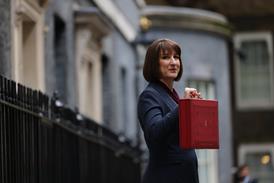According to MHE Retail chairman Edward Whitefield, the US company has to take radical action if it is to gain share in a highly competitive market.
“The two brands are an unusual mix,” said Whitefield. “It can’t really run two businesses like this and still gain central operational [savings] and produce-sourcing gains. It is going to have to consider merging the two brands, meaning it will have to choose one or the other.”
Sears revealed its net income profit had plummeted 62 per cent to US$65 million (£36.1 million) for its second quarter to August 2, falling short of analysts’ expectations. The decline was fuelleds by price markdowns to attract consumers in the fragile US economy.
Comparable store sales at Sears – which targets the midmarket – fell 6.7 per cent, while Kmart – aimed at the lower end of the market – revealed a 5.6 per cent drop.
Interim chief executive W Bruce Johnson said he was hopeful of a better third quarter, driven by “lower domestic inventory levels and continued vigilant expense management”.
However, Whitefield said these are just short-term fixes. “It will help, but it can’t keep doing it,” he said. “This kind of cost reduction has been going on for a long time. It’s like a train on a railroad track – soon, the train will run out of track.”
Whitefield added that the group needs to review its proposition range and retail offer so it can compete with Wal-Mart and Target. “To produce negative growth as a discount retailer is a severe indictment,” he said. “Both brands have been languishing with mediocre merchandising.”
Johnson reduced his forecast for the year, saying: “Given our year-to-date results and the state of the economy, our full-year EBITDA forecast, which assumes flat comparable store sales to modest declines for the rest of the year, is comparable to, but no longer exceeds, last year’s EBITDA.”




























No comments yet